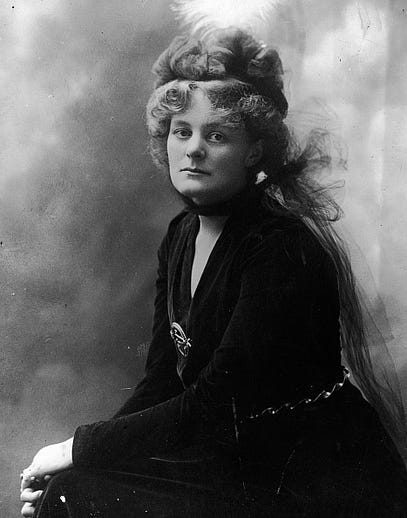|
 |
The Writer's Almanac from Friday, December 20, 2013
"Daughter" by Ellen Bryant Voigt from The Forces of Plenty. © W.W. Norton & Company, 1983.
ORIGINAL TEXT AND AUDIO - 2013
On this day in 1880 the first electric streetlights in New York City lit up a stretch of Broadway, an area that would become known as "The Great White Way." Fifteen carbon arc lights were installed by Charles Brush and his Brush Electric Light Company, lighting up Broadway from 14th to 34th Streets — from lower Union Square to the fashionable Delmonico's restaurant on Madison Square.
Charles Brush had built his first arc lights back in high school, and then spent years working to refine them. Arc lights were the first effective electric lights, replacing gas and oil, and they were named because the light was produced by a current traveling between two electrodes. The scientist Sir Humphry Davy had first demonstrated arc lights back in 1802, but it took decades of experimenting before arc lighting was practical for commercial use. Besides an improved light, Brush designed a generator that had enough power and efficiency to make arc lights work as streetlights.
On this day in 1880, the lights were all installed and ready for lighting at the designated time of 5:30 p.m. The lamps were installed on tall iron posts, twice as tall as the old coal-powered lamps they were replacing. A crowd had gathered at the generating station at 25th Street to watch a steam engineer turn the wheel that would power the generator. At 5:27 the order was given, and the street flared into light, illuminating thousands of Christmas shoppers. The New York Times covered the story for the next day's paper, and the reporter wrote: "At the word, Engineer McGrath grasped the small wheel lever, gave it a twist, and almost instantaneously the bright white jets along Broadway began to flame out like stars emerging from the darkness. [...] A pair of white horses attached to an elegant private carriage outside of Tiffany's was illuminated with a degree of brilliancy beyond which, contrasted with the deep black outline beyond, formed a picture. The great white outlines of the marble stores, the mazes of wires overhead, the throng of moving vehicles, were all brought out with an accuracy and exactness that left little to be desired."
It's the birthday of the Irish revolutionary Maud Gonne, the lifelong muse of poet W.B. Yeats, born in Surrey, England (1865). She and Yeats first met when they were both 25 years old. He fell in love with her immediately and remained in love for the rest of his life.
Maud Gonne was tall and beautiful. Yeats wrote: "I had never thought to see in a living woman such great beauty. A complexion like the blossom of apples. Her movements were worthy of her form."
Yeats asked her to marry him in 1891, but she refused. It was the first of many times that she rejected his marriage proposals. But they remained close to each other throughout their lives, and agreed that they had a "spiritual union."
In response to one of Yeats' many marriage proposals, Maud Gonne told him: "You would not be happy with me. ... You make beautiful poetry out of what you call your unhappiness and you are happy in that. Marriage would be such a dull affair. Poets should never marry."
In 1911, she wrote a letter to him and said, "Our children were your poems of which I was the father sowing the unrest & storm which made them possible & you the mother who brought them forth in suffering & in the highest beauty."
Maud Gonne campaigned for land reform, helped tenants fight eviction, advocated for political prisoners, began a program that fed lunch to Dublin schoolkids, and founded the Daughters of Erin. Yeats wrote many poems for her, including "When You are Old" and "Aedh wishes for the Cloths of Heaven."
On this day in 1803, the Louisiana Purchase was completed for $15 million, which was roughly three cents an acre. The land, which spanned from Montana to the port of New Orleans, doubled the size of the United States.
Be well, do good work, and keep in touch.®
If you are a paid subscriber to The Writer's Almanac with Garrison Keillor, thank you! Your financial support is used to maintain these newsletters, websites, and archive. If you’re not yet a paid subscriber and would like to become one, support can be made through our garrisonkeillor.com store, by check to Prairie Home Productions, P.O. Box 2090, Minneapolis, MN 55402, or by clicking the SUBSCRIBE button. This financial support is not tax deductible.

